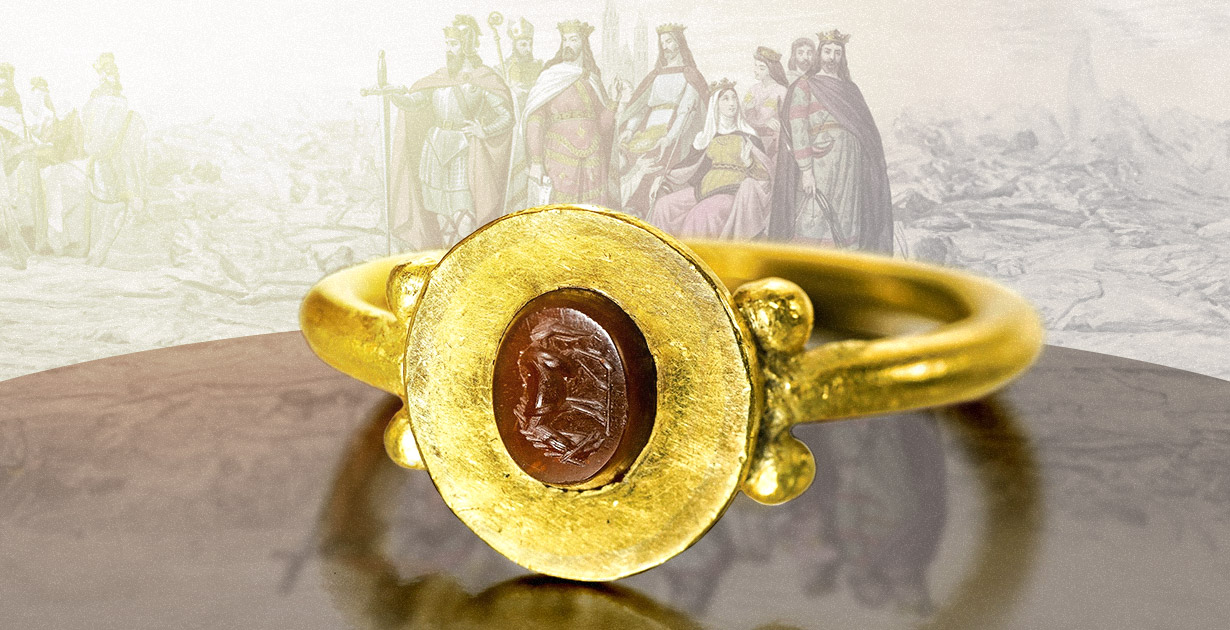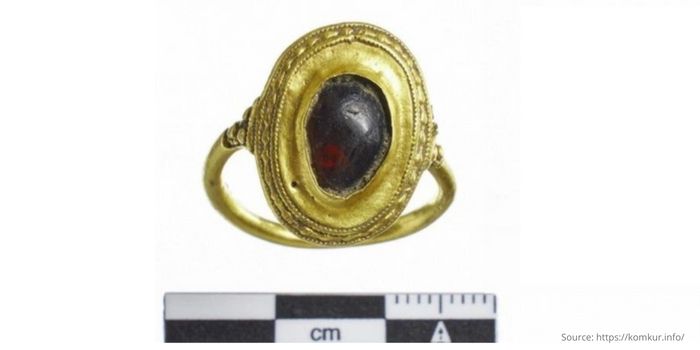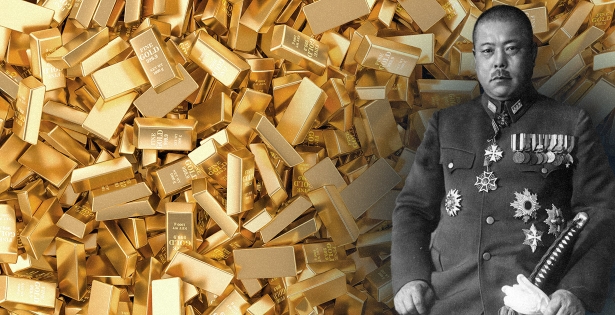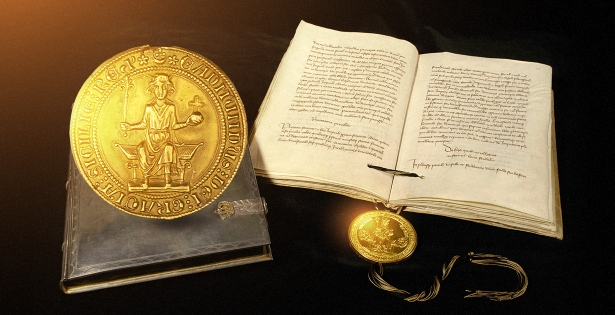
Golden ring of the Merovingian age
Gold can be called an integral part of human history. Many civilizations attached special significance to the precious metal, considering it a symbol of wealth and power, intended to confirm high social status.
This is why in ancient times gold was often used to create family jewelry, which became important heirlooms passed down from generation to generation. One of these pieces of jewelry was discovered relatively recently in Denmark.
In the spring of 2023, news appeared about the discovery of a gold ring in southwestern Jutland, which attracted the attention of not only archaeologists, but also fans of art and history. Crafted from 22-karat gold and adorned with a semi-precious almandine garnet, the ring reflects the jewelry trends of the medieval era.

Experts from the National Museum of Denmark suggest that the find may shed light on previously unknown aspects of the country’s history. After all, it points to the close ties of local rulers with the Merovingians, who are considered the first dynasty of Frankish kings.

Historians say the discovery of the ring not only adds to the understanding of the social dynamics and power structure of the time, but also points to the interconnectedness between distant regions through diplomacy and trade. According to archaeologist Kirstine Pommergaard, the owner of the gold ring could be the daughter of a local ruler.
Pommergaard noted that gold at that time was typically used for “diplomatic gifts.” And marriages in the Middle Ages were often organized with the aim of creating state unions. The Merovingians were probably interested in strengthening ties with local rulers who controlled trade in various regions.
It is noted that the ring was found in 2020, but the find was kept secret for a long time so that archaeologists could conduct research without unwanted attention from the outside.
In the Middle Ages, jewelry was an integral part of political transactions. Earrings, rings and necklaces were considered not just accessories, but a kind of signature confirming the establishment of mutually beneficial relationships. The heads of dynasties carefully selected gifts: therefore, the choice of precious stones and patterns on such jewelry was by no means random.
The almandine garnet, which is inlaid with the ring, was a symbol of power in Scandinavian culture. And the special design of the gold ring with intricate details in the form of two spirals and trefoils underneath was a hallmark of the exquisite craftsmanship characteristic of Frankish jewelers of the period of the 5th-6th centuries AD.

The rich but still unclear history of aristocratic connections in southwestern Denmark is made even more intriguing thanks to discovery of the ring. Scientists hope that further study of the golden ring and Jutland will shed light on the complex political connections along the North Sea in the Middle Ages.
Earlier in England, archaeologists found a gold necklace, also inlaid with garnet. It is unclear who exactly it belonged to: but scientists call the find sensational.
Read more about the 7th century gold necklace in the article:
The archaeologist’s dream: the 7th-century necklace





